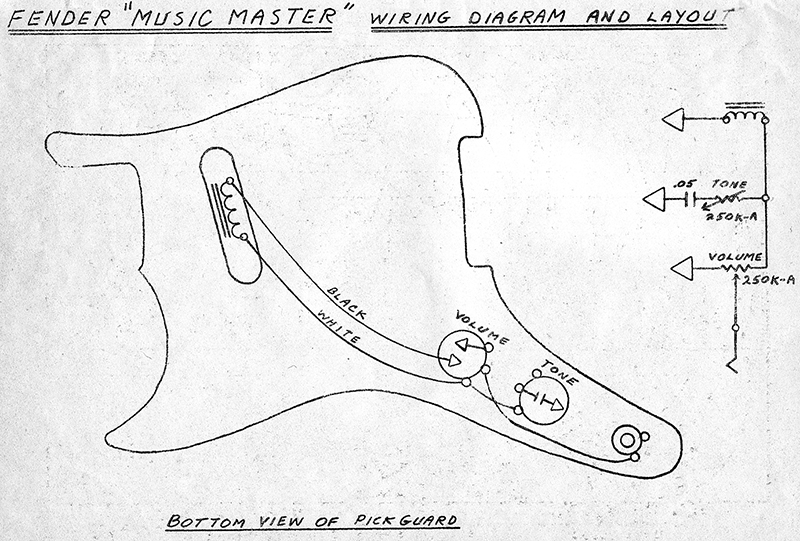

To compensate for the first-run missteps, by May, the guitars were being made with the more-familiar 1950s appointments – one-piece, 21-fret, bolt-on maple neck with 22½” scale and a nut width of 1 5⁄ 8“. So after the initial run, the guards were made of plastic. Pickguards were aluminum, which may have been chosen for its durability (as beginners tend to be heavy-handed), but ironically, the black paint Fender applied did not wear well. Early examples differed in several ways, including having slightly thicker bodies made of ash, and some have areas that were hand-chiseled to fix mistakes in the initial tooling. Sales manager Don Randall chose the name because he thought it “sounded kind of cute” and fit with the existing master-model monikers (i.e. Production began in April on the single-pickup Musicmaster. Here’s a year-by-year look at the history of the these entry-level axes. But today, veteran and neophyte vintage guitar collectors alike are intrigued by these little guitars, in part because they were made with the same care as their more costly siblings even if, compared to the Stratocaster, they were an evolutionary step backward. Leo responded, and the first run of single-pickup Musicmasters was ready in early May of 1956.ĭubbed “¾ instruments,” Musicmasters had much shorter scale lengths and other features intended to make them attractive to a younger, more frugal student player. Often forgotten amongst Fender’s classic line of vintage electric guitars, the definitive (and diminutive) Musicmaster and Duo-Sonic student-grade models were conceived to capitalize on the fact teenagers were taking up the guitar in droves as Bill Haley and the Comets’ “Rock Around the Clock” rode the Billboard charts for 10 weeks in the summer of 1955.įender’s Sales division was acutely aware at the time that nobody would be using a Champion lap steel to try and emulate Danny Cedrone’s guitar solo, so it asked company president Leo Fender – known for his ability to devise a new product in as little as three months – to round out their Spanish-guitar offering with the two beginner models. Having said this, there are a lot worse guitars out there, and as well as being historically important, the 1820 bass can certainly provide the goods when required.1957 Musicmaster with custom black finish.

Over the course of the 70s, the Japanese output improved dramatically, and in many ways these early 70s models are a low point for the brand. These new Epiphones were based on existing Matsumoku guitars, sharing body shapes, and hardware, but the Epiphone line was somewhat upgraded, with inlaid logos and a 2x2 peghead configuration. The Matsumoku factory had been producing guitars for export for some time, but the 1820 bass (alongside a number of guitar models and the 5120 electric acoustic bass) were the first Epiphone models to be made there.
#Fender musicmaster wiring diagram manual#
The Duo-Sonic service manual issued by Fender in 1968 consisted of five sides on a single folded sheet: cover list of components - with part numbers and key to diagrams, (two sides) diagram of disassembled guitar simplified Duo-Sonic circuit diagram detailing pickup and control assemblies.īy the end of the 1960s, a decision had been made to move Epiphone guitar production from the USA (at the Kalamazoo plant where Gibson guitars were made), to Matsumoto in Japan, creating a line of guitars and basses significantly less expensive than the USA-built models (actually less than half the price). Fender Duo-Sonic 1968 replacement parts list (illustrated) The Fender Duo-Sonic was deleted from the solid body range in 1969 these were the final parts lists for this guitar.

This level of post-sales care was rarely seen amongst other guitar manufacturers - at least to the level of detail given here. Something that made maintenance of Fender guitars very easy indeed, even to guitarists without the technical knowledge to describe the fault in their instrument. In some cases, as in the 1968 list below, circuit information and assembly blueprints were also provided.

This would typically include lists of replacement parts, to allow easy and accurate ordering of new components. Fender periodically produced technical information, distributing folders of such information to dealers.


 0 kommentar(er)
0 kommentar(er)
